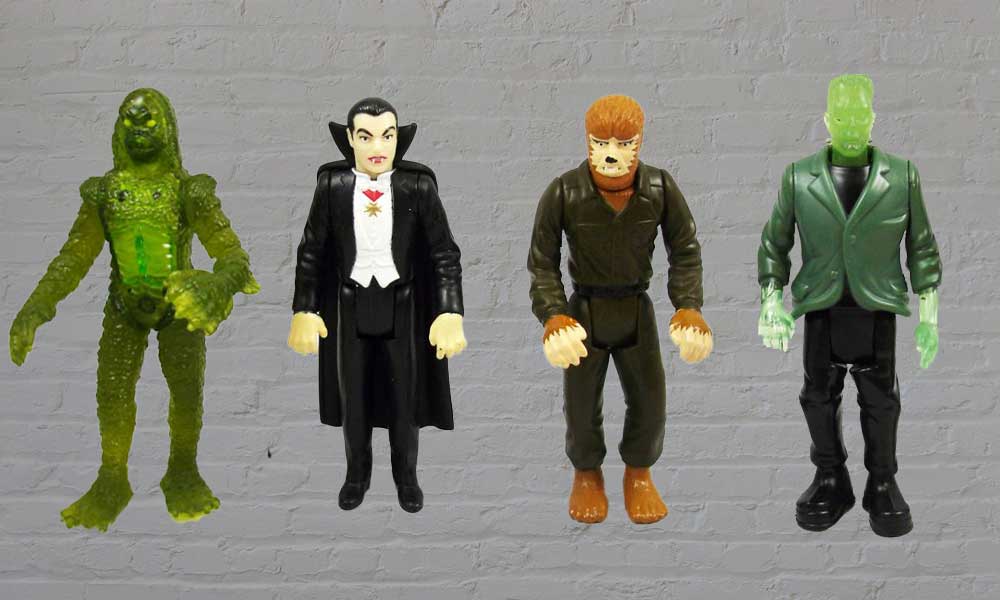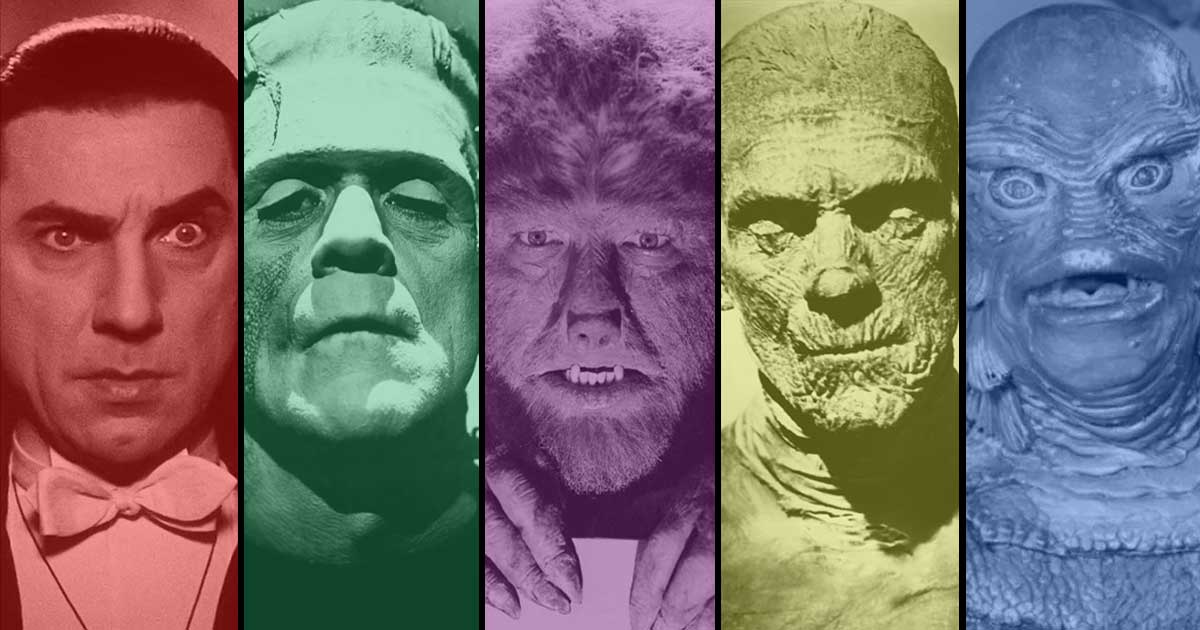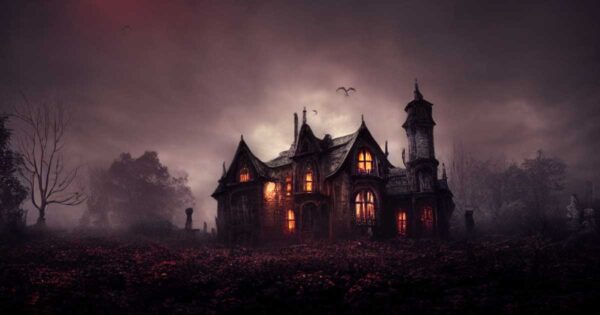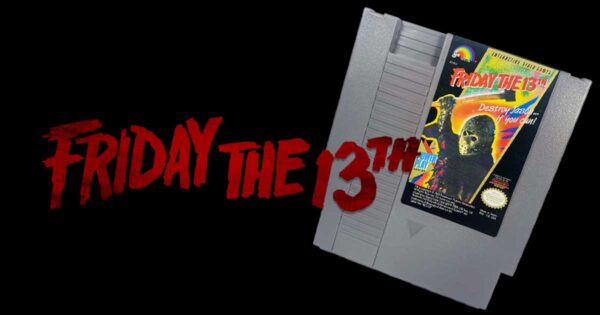In cinematic history, few entities hold as much enduring fascination and chilling allure as the Universal Monsters. These iconic creatures have captivated audiences for generations, haunting the collective imagination with their timeless tales of terror. From the shadowy depths of the 1920s to the present day, the Universal Monsters have left an indelible mark on the landscape of horror cinema, shaping the genre in ways that continue to resonate today.
The Pantheon of Universal Monsters
The Universal Monsters encompass a diverse array of creatures, each with their own distinct brand of horror. Among the most iconic figures are:
Dracula:
The suave and seductive vampire, immortalized by Bela Lugosi in the 1931 classic “Dracula,” remains the quintessential embodiment of gothic horror.
Frankenstein’s Monster:
Created by the mad scientist Dr. Frankenstein, this tragic figure, portrayed by Boris Karloff, grapples with his own existence in the seminal 1931 film “Frankenstein.”
The Wolf Man:
Cursed to transform into a ravenous werewolf under the light of the full moon, the tormented Larry Talbot, played by Lon Chaney Jr., struggles against his primal nature in “The Wolf Man” (1941).
The Mummy:
Awakened from his ancient slumber, the vengeful mummy Imhotep, portrayed by Boris Karloff, stalks the living in search of his lost love in the atmospheric 1932 film “The Mummy.”
The Creature from the Black Lagoon:
Emerging from the murky depths of the Amazon, this amphibious humanoid, featured in the 1954 film of the same name, embodies mankind’s primal fear of the unknown.
These classic monsters form the core of the Universal Monster universe, captivating audiences with their macabre exploits and tragic narratives.
Collaborations and Crossovers
One of the most intriguing aspects of the Universal Monster universe is the propensity for these iconic creatures to cross paths in a series of collaborative films. In the aptly titled “Frankenstein Meets the Wolf Man” (1943), audiences were treated to a thrilling showdown between two of horror’s most legendary figures as they clashed in a battle for supremacy. Similarly, “House of Frankenstein” (1944) and “House of Dracula” (1945) brought together an ensemble cast of monsters, including Dracula, Frankenstein’s Monster, and the Wolf Man, in a series of interconnected narratives that pushed the boundaries of horror storytelling.
These crossover films not only delighted audiences with their spectacle and suspense but also paved the way for future generations of filmmakers to explore the rich tapestry of the Universal Monster universe. From Abbott and Costello’s comedic encounters with the monsters in “Abbott and Costello Meet Frankenstein” (1948) to contemporary reimaginings such as “Van Helsing” (2004), the legacy of these collaborative efforts continues to resonate in popular culture to this day.
The Enduring Popularity of Universal Monsters
What is it about the Universal Monsters that continues to captivate audiences after all these years?
Perhaps it is their timeless appeal, rooted in primal fears and universal themes that transcend time and culture. From the existential angst of Frankenstein’s Monster to the allure of forbidden desire embodied by Dracula, these creatures tap into the deepest recesses of the human psyche, inviting audiences to confront their own fears and desires in the safety of the theater.
The popularity of the Universal Monsters can be attributed to their versatility and adaptability. Whether portrayed as tragic antiheroes or malevolent villains, these iconic creatures lend themselves to a wide range of interpretations, ensuring their relevance in an ever-changing cinematic landscape. From classic black-and-white films to modern reboots and remakes, the Universal Monsters continue to evolve with the times, captivating new generations of fans while paying homage to their storied legacy.
The Most Popular Monster: Dracula
While each of the Universal Monsters has its own legion of devoted fans, it is perhaps Dracula who reigns supreme as the most popular and enduring figure in the pantheon of horror icons. With his aristocratic charm and hypnotic gaze, Dracula embodies the seductive allure of the vampire, captivating audiences with his timeless tale of love and immortality.

Portrayed by the legendary Bela Lugosi in the 1931 classic “Dracula,” the character has since been reimagined countless times on screen, with actors such as Christopher Lee, Gary Oldman, and more recently, Luke Evans, stepping into the role with their own interpretations. From the elegant sophistication of Lugosi’s performance to the brooding intensity of Oldman’s portrayal, each actor brings a unique perspective to the character, ensuring that Dracula remains as captivating and enigmatic as ever.
Collecting Universal Monsters
The legacy of Universal Monsters extends far beyond the silver screen, permeating into the realm of collectibles and action figures, where fans can bring their favorite creatures to life in stunning detail. From meticulously sculpted statues to intricately designed action figures, these collectibles pay homage to the iconic monsters that have captivated audiences for generations. Enthusiasts have the opportunity to adorn their shelves with lifelike renditions of Dracula, Frankenstein’s Monster, the Wolf Man, and more, each meticulously crafted to evoke the essence of their on-screen counterparts.
The Universal Monsters have ventured into unexpected collaborations, broadening their appeal to new audiences. One notable partnership involved an unlikely crossover with the beloved Teenage Mutant Ninja Turtles. In a collaboration between NECA (National Entertainment Collectibles Association) and Nickelodeon, the iconic turtles donned the guise of our beloved monsters in the “TMNT x Universal Monsters” series. This unique crossover saw Leonardo, Michelangelo, Donatello, and Raphael transformed into their monstrous counterparts, with each turtle embodying the characteristics of a classic Universal Monster.
The Universal Monsters have left their mark in the realm of fast food promotions, partnering with Burger King to release a series of collectible toys. These toys, featuring miniature versions of the iconic monsters, delighted young fans and collectors alike, providing a tangible connection to the rich mythology of the Universal Monster universe. Available as part of Burger King’s kids’ meals, these collectibles added an extra layer of excitement to the dining experience, sparking the imagination of children as they embarked on their own monster-hunting adventures.

Collectibles and action figures serves as a testament to the enduring popularity of the Universal Monsters, offering fans the opportunity to immerse themselves in the rich tapestry of horror cinema history. Whether displayed proudly on shelves or incorporated into imaginative play, these collectibles serve as tangible reminders of the timeless allure of the Universal Monster universe, ensuring that their legacy continues to endure for generations to come.
The Universal Monster Universe
The Universal Monster universe stands as a testament to the enduring power of classic horror cinema. From the iconic figures that populate its dark and shadowy realms to the timeless narratives that continue to chill audiences to the bone, these legendary creatures have left an indelible mark on the genre, shaping the landscape of horror cinema for generations to come. As long as there are audiences willing to brave the darkness, the Universal Monsters will continue to reign supreme, haunting our dreams and fueling our nightmares for years to come.















Add a comment